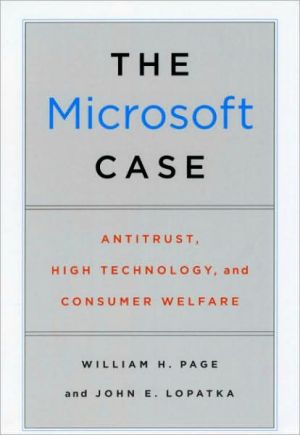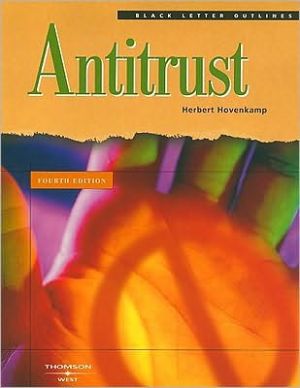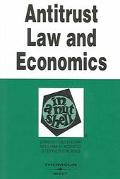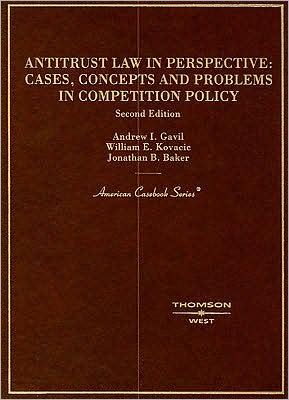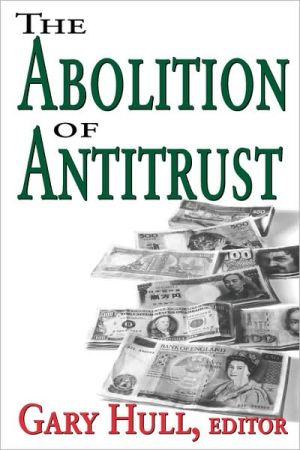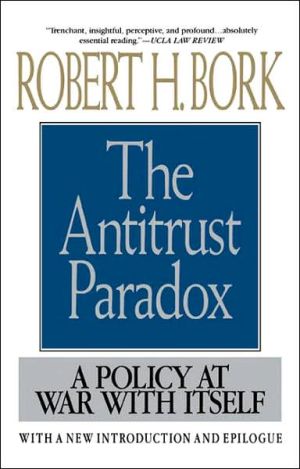The Microsoft Case: Antitrust, High Technology, and Consumer Welfare
In 1998 the United States Department of Justice and state antitrust agencies charged that Microsoft was monopolizing the market for personal computer operating systems. More than ten years later, the case is still the defining antitrust litigation of our era. William H. Page and John E. Lopatka's The Microsoft Case contributes to the debate over the future of antitrust policy by examining the implications of the litigation from the perspective of consumer welfare.
Search in google:
In 1998, the United States Department of Justice and state antitrust agencies charged that Microsoft was monopolizing the market for personal computer operating systems. More than ten years later, the case is still the defining antitrust litigation of our era. William H. Page and John E. Lopatka’s The Microsoft Case contributes to the debate over the future of antitrust policy by examining the implications of the litigation from the perspective of consumer welfare. The authors trace the development of the case from its conceptual origins through the trial and the key decisions on both liability and remedies. They argue that, at critical points, the legal system failed consumers by overrating government’s ability to influence outcomes in a dynamic market. This ambitious book is essential reading for business, law, and economics scholars as well as anyone else interested in the ways that technology, economics, and antitrust law have interacted in the digital age. “This book will become the gold standard for analysis of the monopolization cases against Microsoft. . . . No serious student of law or economic policy should go without reading it.”—Thomas C. Arthur, Emory University Choice “[Page and Lopatka] present a detailed summary of the parties' strategies and of the legal decisions (primarily the federal case); sketch the economics (network effects, path dependencies); and analyze various proposed remedies (conduct, structure). The book also includes an excellent, detailed summary of the US legal issues in the Department of Justice prosecution of Microsoft. . . . Highly recommended.”—Choice
Preface ix1 Origins 1Ideological Sources of Antimonopolization Law 2Microsoft's Predecessors: The Public Monopolization Case 4Microsoft's Beginnings: A Post-Chicago Convergence 192 Decisions 33Chronology 34The Liability Decisions 35The Remedial Decisions 70The Follow-on Private Litigation 78The European Commission Decision 803 Markets 85Two Systems of Belief about Operating Systems and Middleware 86Network Effects and Related Economic Concepts 91Defining Software Markets 964 Practices I: Integration 115A Preliminary Skirmish 119Integration on Trial 123Rethinking and Redefining Integration under Sherman Act Standards 1295 Practices II: The Market Division Proposal, Exclusive Contracts, and Java 167The Market Division Proposal 168The Exclusive Contracts 184Java 1916 Remedies 203The Goals of Antitrust Remedies 204Structural Remedies 205Conduct Remedies 212Damage Remedies 224Aftermath 243Notes 249Index 331
\ Thomas C. Arthur"This book will become the gold standard for analysis of the monopolization cases against Microsoft. Page and Lopatka place the litigation in an important historical context with a detailed connection to law and public policy. No serious student of law or economic policy should go without reading it."\ \ \ \ \ E. Thomas Sullivan“The first book to provide a clear and careful exposition of the facts and contending economic arguments of the government’s case against Microsoft, it is a must read for all those interested in the trends in competition, technology, and the law.”\ \ \ Keith Hylton“This book provides a thorough discussion of the law and economics of the Microsoft case, which consumed the time and energy of numerous lawyers and economists, as direct participants in the litigation or in providing real-time commentary as the case progressed. The Microsoft case is unique among high- profile antitrust lawsuits in terms of the level of scrutiny given to it during the course of the litigation. This book captures many of the perspectives offered on the case as well as the authors’ own very sensible conclusions on the lessons of the case.”\ \ \ \ \ Herbert Hovenkamp“An excellent account of the facts and theory of the government’s case against Microsoft and how it fits into the American antitrust tradition. The authors present a view of the Microsoft litigation that will keep the controversy over that decision and its legitimacy in the spotlight. A very well written and well argued book.”--Herbert Hovenkamp, Ben and Dorothy Willie Chair, The University of Iowa College of Law\ \ \ \ \ Business History Review"[This book] provides a sophisticated understanding of the antitrust prosecution of the U.S. Justice Department mounted against the Microsoft computer company in 1998. The authors incisively analyze the leading decisions and remedial orders from some 150 opinions. . . . Economists, law and economics experts, lawyers, judges, and historians will find the analytical theories to be sound, innovative, and presented quite accessibly."\ \ \ \ \ Regulation"The Microsoft Case is far more than a source. It's also a coherent analysis by two economically literate legal scholars who are obviously doing their best to present an unbiased account."\ \ \ \ \ Choice“[Page and Lopatka] present a detailed summary of the parties' strategies and of the legal decisions (primarily the federal case); sketch the economics (network effects, path dependencies); and analyze various proposed remedies (conduct, structure). The book also includes an excellent, detailed summary of the US legal issues in the Department of Justice prosecution of Microsoft. . . . Highly recommended.”\ \ \ \ \ Business History Review[This book] provides a sophisticated understanding of the antitrust prosecution of the U.S. Justice Department mounted against the Microsoft computer company in 1998. The authors incisively analyze the leading decisions and remedial orders from some 150 opinions. . . . Economists, law and economics experts, lawyers, judges, and historians will find the analytical theories to be sound, innovative, and presented quite accessibly.\ — Tony A. Freyer\ \ \ \ \ \ RegulationThe Microsoft Case is far more than a source. It's also a coherent analysis by two economically literate legal scholars who are obviously doing their best to present an unbiased account.\ — David R. Henderson\ \ \
